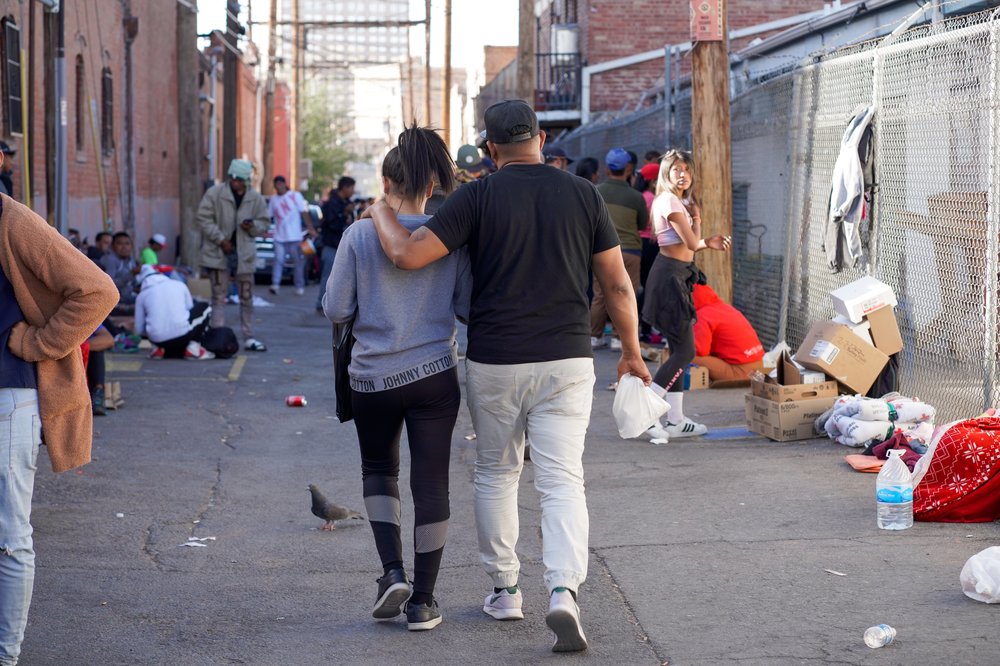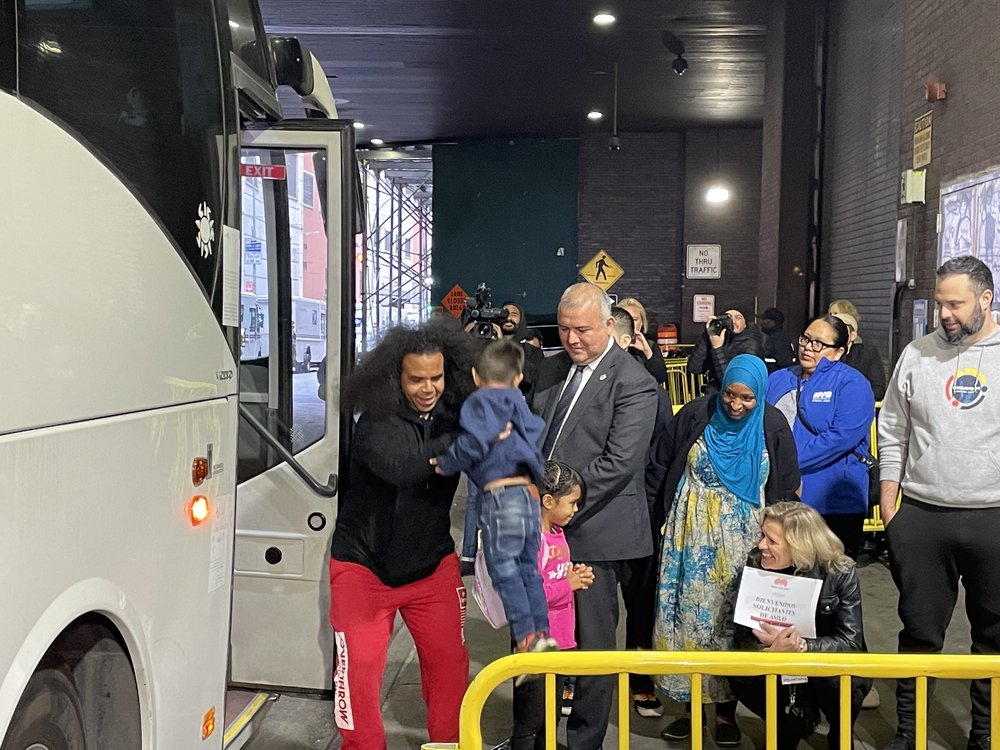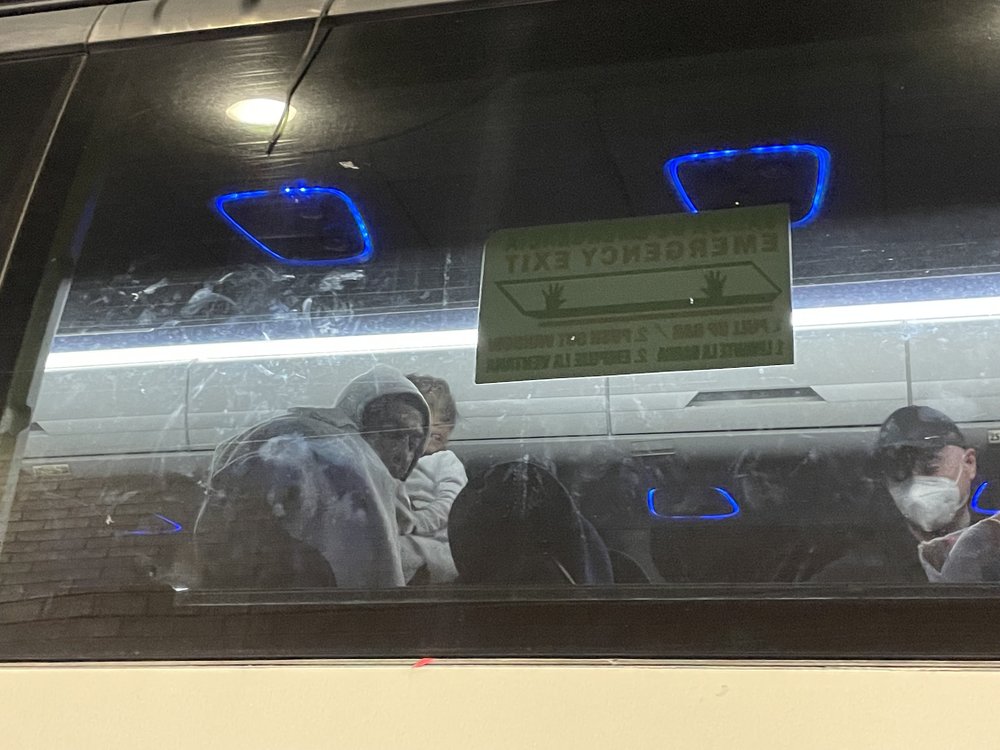The Title 42 border rule ends Thursday. What does it mean for New York City?
May 10, 2023, 8:31 a.m.
Local officials are predicting more than 1,000 migrants could funnel into New York City each day, substantially more than the norm.

A sweeping, federal pandemic-era public health measure called Title 42 is set to expire on Thursday, with big implications for migrants crossing the U.S. southern border and for New York City.
Here’s what to know:
What is Title 42?
It’s a previously little-known section of the Public Health Service Act of 1944 that can be used to turn away people seeking to enter the U.S. when there's a "serious danger" of spread of communicable disease.
Under the law, many migrants crossing the border seeking asylum could be immediately expelled, without the ability to seek asylum, as normally required under federal immigration law and international treaties. It’s led to the expulsion of more than 1 million migrants so far, according to an analysis of U.S. Customs and Border Protection data last spring by Pew Research Center.
The Trump administration invoked the law in March 2020, when the coronavirus pandemic was sweeping the country. When President Joe Biden took office, he initially continued to enforce the law. But after a series of court battles, a federal judge struck down the rule in November. And the Biden administration recently announced it would no longer enforce the policy after Thursday at 11:59 p.m.

What will happen at the border when Title 42 expires?
Biden administration officials have said they expect a new surge in migrants. Border crossings may double after Thursday, according to Biden administration estimates. Federal officials announced last week that the government was sending 1,500 troops to the U.S.-Mexico border to free up Border Patrol from administrative tasks.
With Congress at logjams on federal immigration reform, Biden announced his own new border plan last month, with harsher consequences for unlawfully crossing the border and the opening of regional processing centers in Latin America. But it’s still unclear how those policies will play out.
Under Title 42, migrants aren't penalized for repeated unlawful border crossings attempts, unlike the regular Title 8 immigration law, under which such attempts could lead to fines, jail time, and years-long barriers to legal entry. Ironically, that became a "magnet" for border crossings, so the end of Title 42 may not lead to an influx of more migrants, say Muzaffar Chishti, a senior fellow at the Migration Policy Institute and director of the organization's office at NYU School of Law. But, he added, "Whether we like it or not, we are entering a different chapter of asylum regime in our country."
“For the first time, we now have a regime which says that if you enter between ports of entry, you'll be presumably deemed not to be eligible for asylum,” Chishti said.

What will happen in New York City when Title 42 expires?
With the end of Title 42, coupled with Texas resuming its campaign of busing migrants to the city, local officials are predicting more than 1,000 migrants could funnel into the city a day. That’s up from about 200 to 300 a day as of late.
There’s a concern brewing among officials and immigration advocates alike that the city won’t be able to comply with its longstanding court-mandate to provide all residents a place to stay overnight.
"It was a struggle, but they were managing with 200 people per day, a couple days with 500,” Josh Goldfein, a Legal Aid attorney, said. “If they start to get 1,500 people a day? They can’t even take 1,500 peoples’ names to my knowledge.”

What is New York City doing to prepare?
Local officials are scrambling to find more housing for the new migrants, even looking into unconventional options. The city recently started renting out upstate hotels in Rockland and Orange Counties, setting up hundreds of cots in an old police academy gym, and is considering more weatherized “tent cities” in Central Park.
More than 120 local hotels are currently contracted as emergency shelters, but officials say they’re facing an even more limited hotel stock with the onset of tourism season.
Meanwhile, Mayor Eric Adams continues to blame the state and federal governments for not doing enough to help. He’s intensified his months-long pleas for more federal aid, coordination, and – above all – work permits, so the new arrivals can support themselves and move out of the strained housing system.
“We are calling on the federal government to intervene now,” Mayor's Office of Immigrant Affairs commissioner Manuel Castro said last week. “There is no more time to wait. They need to step in at the US Mexico border and help people spread across the country.”
NYC spends nearly $370 daily on each asylum seeker household. The sum could top $1.4B this fiscal year. For asylum seekers looking to work in New York, desperation meets necessity A year after the first asylum seeker buses left Texas, is NYC ready for more?